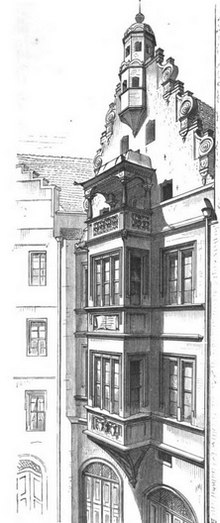Saxon Renaissance
The most important forerunner of the Renaissance in Saxony was the Electoral Saxon master builder Arnold von Westfalen (ca.
Well-known artists and builders who worked in Saxony were: Giovanni Maria Nosseni from Lugano, Hans von Dehn-Rothfelser, Benedetto Tola (* 1525 in Brescia/Italy; † 1572), Gabriel de Tola, Caspar Vogt von Wierandt, Hans Irmisch, Rochus zu Lynar, Carlo di Cesare del Palagio.
The Torgau Castle Hartenfels with its famous Wendelstein, which was significantly rebuilt by the middle of the 16th century, is one of the most important buildings of the early Renaissance in Germany.
After the Wittenberg capitulation and the transition of Torgau to the Albertines, Elector Maurice initially continued the work on the castle.
The facades of the Dresden Palace were richly decorated with sgraffiti and Maurice's brother and successor, Elector Augustus, who reigned from 1553 until 1586, completed the construction, which became a major work of the Saxon Renaissance.
Wealthy citizens began to copy the resulting magnificent buildings in Dresden and Meissen and erected houses with arched portals, facades with square oriels above the ground floor, often attached in pairs.
In cities such as Meissen, Pirna, Freiberg, Görlitz, Zwickau, Torgau and Wittenberg there are still today numerous Renaissance town houses.
John George's grandson Augustus II the Strong, who was impressed by his grandfather's opulent court festivals, pushed the new architectural style forward with unprecedented energy from 1694 and thereby created the Dresden Baroque, which shaped an entire century and radiated far beyond national borders.
Buildings from the time of the Saxon Renaissance can be found today in almost all areas that belonged to the House of Wettin at the time of the Renaissance, i.e. today in several states of Germany as Saxony, Thuringia, Saxony-Anhalt (southern part) and Brandenburg (Lower Lusatia) as well as in adjacent foreign areas such as Poland and Bohemia.
On the other hand, master builders of the Weser Renaissance carried out the conversion of the old monastery into Leitzkau Castle near Magdeburg, whose facades and gables have natural stone décor and fan tips.


